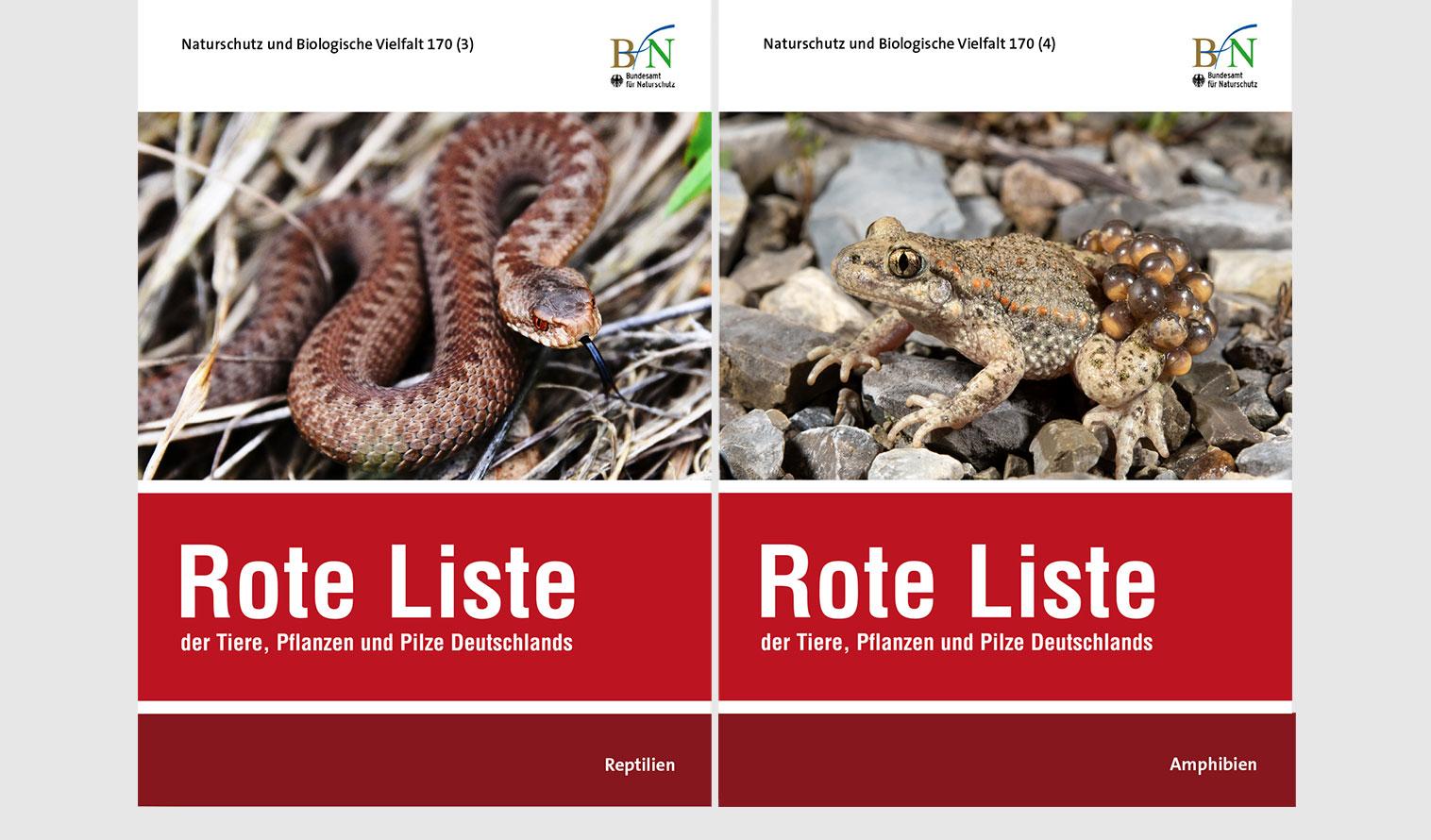Titel
New Red Lists – amphibians and reptiles threatened in Germany

18th August 2021 — The Red Lists recently published by the Federal Agency for Nature Conservation (BfN) together with the Red List Centre (RLZ) demonstrate that in both classes of animals, the populations have declined over the past 120 years. The current Red List of Amphibians includes all 21 species occurring in Germany, and the current Red List of Reptiles all 14 species. For the first time, evaluations of nationwide grid distribution data were available to determine population trends for the lists.
Germany's responsibility for the global conservation of certain species
In addition to the endangerment status, the authors have determined Germany's national responsibility for the global conservation of species with important occurrences in Germany in the current Red Lists. Germany has an increased responsibility for nine amphibian species and seven reptile species, including species that are declining in numbers, such as the tree frog or Germany's most common reptile species, the western slow worm. For the alpine newt, which is also still common nationally, experts estimate that Germany is home to almost a third of the world's occurrences.
"For these Red Lists, we have succeeded in recruiting a very large number of Germany's species experts, and thus in pooling a wealth of experience. Forty-four authors have compiled this joint work in a specially founded Red List committee. Most of the observation data is the result of volunteer mapping – without the commitment of the volunteer experts, it wouldn’t have been possible to compile the Red Lists in this quality," explains Dr Steffen Caspari, Head of the Red List Centre at the DLR Project Management Agency.
Red Lists are a crucial basis for the protection of biodiversity in Germany. They document the status of species and, indirectly, the impact of human activities on nature, representing early warning systems for the development of biological diversity and indicating where action is needed. They enable nature conservation measures to be weighted and priorities to be set for implementation. At the same time, they point to research needs.
The Red List Centre
The Rote-Liste-Zentrum (RLZ – Red List Centre), based at DLR-PT, has been coordinating the compilation of Germany's nationwide Red Lists of animals, plants and fungi on behalf of the Federal Agency for Nature Conservation since 2019. During the compilation process, the DLR-PT provides scientific support to the authors and assists them in organisational implementation – up to the final technical approval of the Red List by the BfN, which publishes the lists.
Red Lists are scientific expert reports and serve to inform the public about the endangerment status of species. Among other things, they are a source of data for legislative measures, a basis and argumentation aid for spatial and environmentally relevant planning and an indicator of the need for action for the conservation of animal, plant and fungal species. The nationwide Red Lists are compiled by around 550 experts.
The topic of biodiversity at DLR-PT
DLR-PT supports its clients in the planning and realisation of research and implementation programmes for the conservation of biological diversity. For example, the German IPBES Coordination Office (IPBES: Intergovernmental Science-Policy Platform on Biodiversity and Ecosystem Services, World Biodiversity Council) is located here. The Federal Programme on Biological Diversity, which was specially set up to support the National Strategy, is also managed by DLR-PT. It promotes concrete conservation measures that are intended to help halt and, if possible, reverse the decline of biological diversity in Germany.